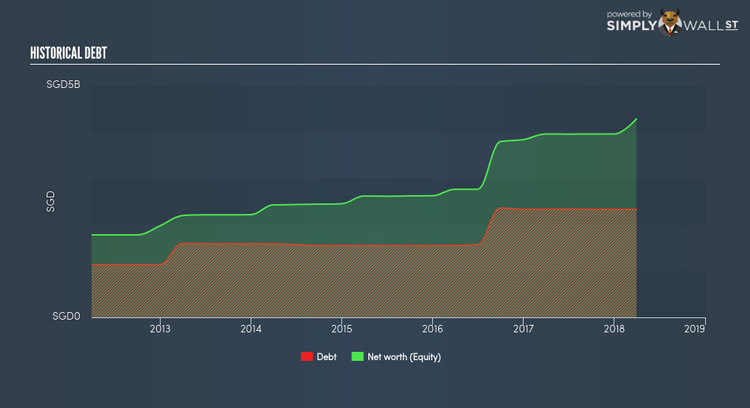Can Mapletree Commercial Trust (SGX:N2IU) Continue To Outperform Its Industry?

With an ROE of 13.25%, Mapletree Commercial Trust (SGX:N2IU) outpaced its own industry which delivered a less exciting 7.25% over the past year. Superficially, this looks great since we know that N2IU has generated big profits with little equity capital; however, ROE doesn’t tell us how much N2IU has borrowed in debt. We’ll take a closer look today at factors like financial leverage to determine whether N2IU’s ROE is actually sustainable. Check out our latest analysis for Mapletree Commercial Trust
Breaking down ROE — the mother of all ratios
Firstly, Return on Equity, or ROE, is simply the percentage of last years’ earning against the book value of shareholders’ equity. It essentially shows how much the company can generate in earnings given the amount of equity it has raised. Generally speaking, a higher ROE is preferred; however, there are other factors we must also consider before making any conclusions.
Return on Equity = Net Profit ÷ Shareholders Equity
ROE is measured against cost of equity in order to determine the efficiency of Mapletree Commercial Trust’s equity capital deployed. Its cost of equity is 8.51%. Since Mapletree Commercial Trust’s return covers its cost in excess of 4.74%, its use of equity capital is efficient and likely to be sustainable. Simply put, Mapletree Commercial Trust pays less for its capital than what it generates in return. ROE can be dissected into three distinct ratios: net profit margin, asset turnover, and financial leverage. This is called the Dupont Formula:
Dupont Formula
ROE = profit margin × asset turnover × financial leverage
ROE = (annual net profit ÷ sales) × (sales ÷ assets) × (assets ÷ shareholders’ equity)
ROE = annual net profit ÷ shareholders’ equity
The first component is profit margin, which measures how much of sales is retained after the company pays for all its expenses. Asset turnover shows how much revenue Mapletree Commercial Trust can generate with its current asset base. The most interesting ratio, and reflective of sustainability of its ROE, is financial leverage. Since ROE can be inflated by excessive debt, we need to examine Mapletree Commercial Trust’s debt-to-equity level. Currently the debt-to-equity ratio stands at a reasonable 54.42%, which means its above-average ROE is driven by its ability to grow its profit without a significant debt burden.
Next Steps:
While ROE is a relatively simple calculation, it can be broken down into different ratios, each telling a different story about the strengths and weaknesses of a company. Mapletree Commercial Trust’s above-industry ROE is encouraging, and is also in excess of its cost of equity. ROE is not likely to be inflated by excessive debt funding, giving shareholders more conviction in the sustainability of high returns. Although ROE can be a useful metric, it is only a small part of diligent research.
For Mapletree Commercial Trust, I’ve put together three fundamental aspects you should further research:
Financial Health: Does it have a healthy balance sheet? Take a look at our free balance sheet analysis with six simple checks on key factors like leverage and risk.
Valuation: What is Mapletree Commercial Trust worth today? Is the stock undervalued, even when its growth outlook is factored into its intrinsic value? The intrinsic value infographic in our free research report helps visualize whether Mapletree Commercial Trust is currently mispriced by the market.
Other High-Growth Alternatives : Are there other high-growth stocks you could be holding instead of Mapletree Commercial Trust? Explore our interactive list of stocks with large growth potential to get an idea of what else is out there you may be missing!
To help readers see pass the short term volatility of the financial market, we aim to bring you a long-term focused research analysis purely driven by fundamental data. Note that our analysis does not factor in the latest price sensitive company announcements.
The author is an independent contributor and at the time of publication had no position in the stocks mentioned.

 Yahoo Finance
Yahoo Finance 

